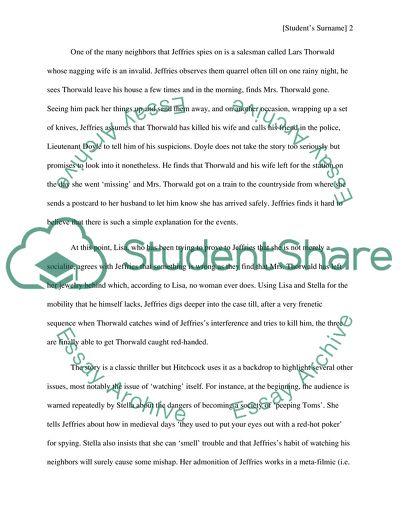Cite this document
(Rear Window: Watching as Dangerous Activity Movie Review Example | Topics and Well Written Essays - 1500 words - 25, n.d.)
Rear Window: Watching as Dangerous Activity Movie Review Example | Topics and Well Written Essays - 1500 words - 25. https://studentshare.org/visual-arts-film-studies/1788450-essay
Rear Window: Watching as Dangerous Activity Movie Review Example | Topics and Well Written Essays - 1500 words - 25. https://studentshare.org/visual-arts-film-studies/1788450-essay
(Rear Window: Watching As Dangerous Activity Movie Review Example | Topics and Well Written Essays - 1500 Words - 25)
Rear Window: Watching As Dangerous Activity Movie Review Example | Topics and Well Written Essays - 1500 Words - 25. https://studentshare.org/visual-arts-film-studies/1788450-essay.
Rear Window: Watching As Dangerous Activity Movie Review Example | Topics and Well Written Essays - 1500 Words - 25. https://studentshare.org/visual-arts-film-studies/1788450-essay.
“Rear Window: Watching As Dangerous Activity Movie Review Example | Topics and Well Written Essays - 1500 Words - 25”. https://studentshare.org/visual-arts-film-studies/1788450-essay.


